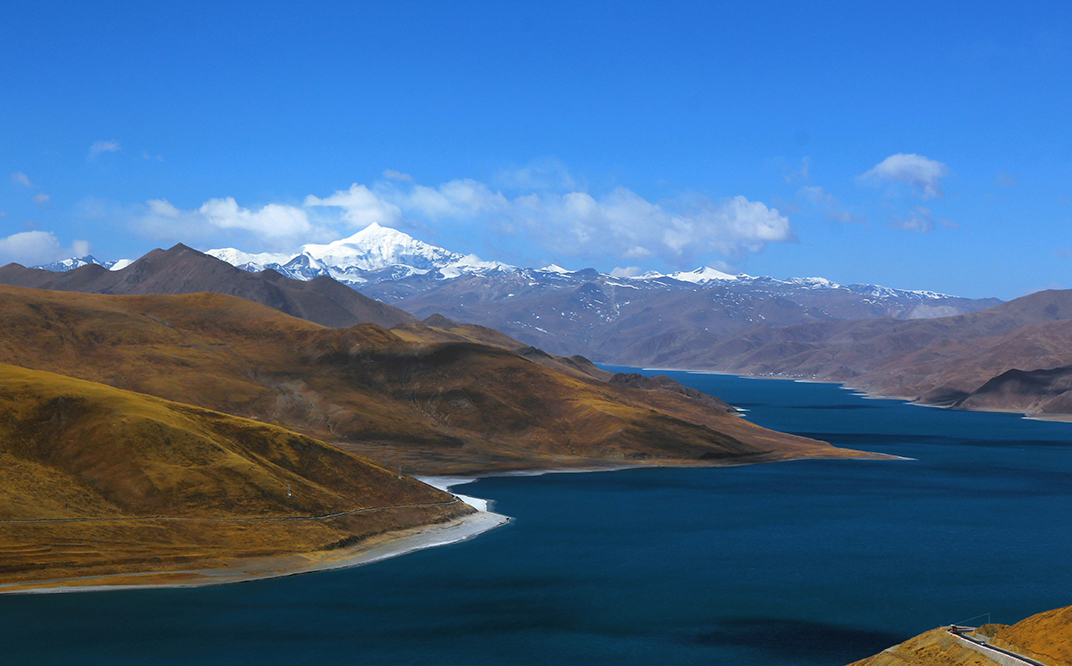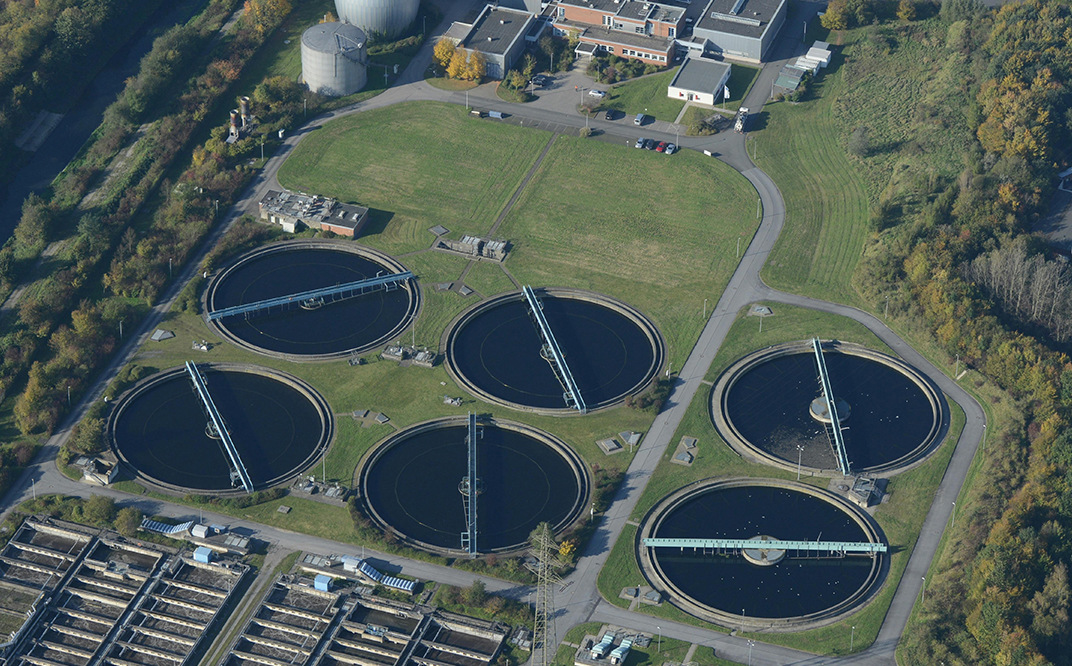Calculation of Water Footprint
The expansion of urban areas and rapid population growth have led to a significant rise in freshwater use, essential for life. The increasing demand for water to produce food, energy, and consumer goods makes it crucial to use limited resources wisely. The water footprint concept allows local and global organizations to assess their water usage and set strategic goals for promoting water conservation. Let’s explore answers to questions such as “What is a water footprint?”, “How is a water footprint calculated?” and “What can be done to reduce water footprints?”.

What is a Water Footprint?
Like the carbon footprint, the water footprint is an environmental indicator that measures the volume of freshwater used by individuals, businesses, or nations. This measurement is typically given in liters or cubic meters. Calculating the water footprint helps determine the volume of water consumed in daily, monthly, or annual activities, such as a company’s production of textiles or a country’s overall water usage.
According to research by McKinsey & Company, global water demand is expected to exceed supply by 40% by 2030. Due to the scarcity of resources, this imbalance leads to water insecurity in many countries.
The water footprint idea was first introduced in 2002 by Arjen Hoekstra. Hoekstra, who worked at the UNESCO-IHE Institute for Water Education in Delft, established the Water Footprint Network in 2008 with support from key business, government, and academia figures. The primary goal of this concept is to raise awareness about the amount of water consumed in production processes and daily activities, encouraging more sustainable and conscious water usage. The measurement of water footprints invites individuals, organizations, and countries to implement water-saving measures and contribute to a sustainable future.
Types of Water Footprints
Three distinct types of water footprints exist: blue, green, and grey. These types reflect the amounts of water consumed, evaporated, and polluted. The details of each type are as follows:
Blue Water Footprint:
Blue water footprint represents the volume of surface and groundwater used directly or evaporated during the production process of goods. It accounts for the water consumed in agricultural practices or daily household use. It measures the freshwater extracted from sources like rivers, lakes, and underground reservoirs.
Green Water Footprint:
Green water footprint measures the amount of rainwater stored on the surface, typically used for growing crops or plants. It indicates the water demand for agricultural production, specifically the rainfall required for plant growth. The green water footprint is crucial for understanding the water pressure in agrarian or ecosystems.
Grey Water Footprint:
This type of footprint reflects the amount of freshwater required to dilute or treat the polluted water, which results from eliminating chemicals and pollutants during production processes. It indicates the amount of water to dilute or purify contaminants and highlights its importance for maintaining ecosystem health. This process can increase the demand for freshwater to ensure sustainable water use and the protection of ecosystems.
The different types of water footprints help understand water resources’ usage and environmental impacts. Sustainable management of these resources and minimizing their ecological effects has become not just an option but a necessity.
Factors Considered in Water Footprint Calculation

During water footprint measurement, various factors are considered, and the results obtained are generally approximate, not exact. The accuracy of the data used in the water footprint calculation determines how closely the results reflect reality. The data included in the calculation process may vary depending on whether it is conducted for individuals, companies, or countries. The following data are typically used when measuring water footprint:
- Total Consumption Volume and GDP
The first factor considered when calculating the water footprint of a country is the total volume of water consumption. One of the key factors that determine the scale of water usage in a country is its Gross Domestic Product (GDP) level. The GDP, which is directly related to water consumption, represents a country’s economic size. Countries with larger economies consume more water for industrial activities, agricultural practices, and domestic use. Therefore, countries with higher GDPs also tend to have higher water consumption volumes. For example, the water footprint of the United States, a country with a large economy and high population density, is significantly higher than countries with smaller economies.
- Consumption Patterns
Consumption patterns of food products that require substantial amounts of water for production, such as dairy and meat, significantly contribute to the increase in water footprint. For instance, beef production requires a worthwhile quantity of water, whereas grain production demands far less. As a result, countries with high meat consumption tend to have a larger water footprint than those that predominantly consume grains. Consumption patterns are not limited to food products; clothing and industrial products also expand the water footprint.
- Climate Conditions
Climate plays a significant role in water footprint calculations. In hot and dry climates, the water used in agriculture is typically higher. High temperatures accelerate evaporation, causing crops to require more water; for example, Northern Africa or the Middle East countries experience high temperatures and low rainfall. Therefore, the compulsory amount of water for agricultural production is very high. In these regions, where water resources are limited, climate conditions are critical for water management.
- Agricultural Practices and Technology
The methods used in agriculture, including irrigation techniques and crop selection, significantly impact water use efficiency. Traditional irrigation methods often use wastewater, while advanced technologies like drip irrigation or rainwater harvesting can reduce water usage. The type of crops grown also matters as water-intensive crops like rice or cotton increase the water footprint compared to less water-demanding alternatives.
- Industrial Processes
Industries consume large amounts of water as raw materials and for cooling or cleaning processes. Their water footprint varies based on the type of industry, production methods, and the efficiency of water recycling practices. For instance, industries using water-intensive processes without proper recycling systems cause higher water consumption and pollution.
- Population Density and Urbanization
Regions with higher population densities or rapid urbanization often experience increased water demand for domestic use and infrastructure development. Urban areas also face challenges in maintaining sustainable water supply systems, which can contribute to inefficient water use and a higher water footprint.
By considering these factors, organizations, governments, and individuals can identify areas of improvement in water usage, implement sustainable practices, and reduce their overall water footprint. This approach supports conservation efforts and contributes to long-term water resource sustainability.
Individual Solutions to Reduce Water Footprint
Small changes in daily habits can significantly contribute to conserving water resources and building a sustainable future. Simple yet effective measures taken by individuals can support the conscious use of natural resources and reduce water footprints.

Shorter Shower Times
Reducing shower times is one of the simplest ways to use water more efficiently. Long showers often result in unnecessary water wastage. Limiting showers to 5–10 minutes can save substantial water.
Water-Efficient Showerheads
Installing water-efficient showerheads balances water flow to promote more effective water consumption. This small adjustment can save hundreds of liters of water annually, making a noticeable impact.
Consumption of Local and Sustainable Foods
The production of animal-based products, such as meat and dairy, requires significantly more water than plant-based foods. Reducing meat consumption and adopting a plant-based diet can help lower water footprints. Additionally, choosing local and sustainably sourced agricultural products supports efficient water use. Buying locally produced goods reduces the water used in production and transportation processes and supports local farmers.
Adopting Circular Economy Practices
Embracing a circular economy, which emphasizes reusing resources, minimizes water consumption and environmental impacts. Using products for their lifespan and choosing recyclable items can significantly improve water resource efficiency.
By adopting these individual measures, each person can contribute to global efforts to reduce water consumption, conserve resources, and ensure a sustainable future.
Corporate Solutions to Reduce Water Footprint

In addition to individual consumers, businesses can take significant steps to reduce their water footprint. Implementing environmental quality systems and focusing on water conservation can protect the environment while enabling the development of sustainable business models. Companies can enhance their brand reputation, raise awareness, and reach broader audiences by engaging in conservation-focused activities. Here are some key measures organizations can take to reduce their water footprint:
Improving Water Efficiency
- Transitioning to modern, water-saving technologies can significantly enhance water efficiency. For instance, using drip irrigation systems can make agricultural irrigation more efficient.
- Regularly maintaining water infrastructure and promptly addressing leaks can prevent unnecessary water loss.
Water Recycling Practices
- Industrial facilities can treat wastewater generated during production and reuse it, reducing overall water consumption.
Resource Monitoring and Management
- Digital water monitoring systems, increasingly integrated into various industries, provide real-time data on water consumption and wastewater management.
- This data facilitates the development of strategies for better water management and more efficient usage.
Optimizing Production and Supply Chain Processes
- Innovative approaches may be needed to optimize water usage in production. For example, choosing materials that require less water during production can significantly reduce water consumption.
- When selecting suppliers or logistics services, companies should prioritize those with transparent and realistic water efficiency practices to support sustainable resource use.
By adopting these strategies, businesses can reduce their water footprint and contribute to the global effort to conserve water resources and promote sustainability.
Why is Reducing Water Footprint Important?
Reducing the water footprint should be seen as an individual responsibility and a collective societal duty. Even the most minor efforts to minimize water usage can lead to significant impacts, such as:
1. Conservation of Limited Water Resources
Freshwater resources are finite, and their overuse risks ecosystems and human survival. Reducing water consumption helps preserve these vital resources for future generations and protects biodiversity.
2. Combating Water Scarcity
In regions where water scarcity is a pressing issue, reducing water usage can alleviate stress on local water supplies and ensure fair access for all communities.
3. Mitigating Climate Change Effects
Lowering water consumption indirectly reduces energy usage, as water extraction, treatment, and distribution are energy-intensive processes. This, in turn, decreases greenhouse gas emissions and helps combat climate change.
4. Promoting Sustainable Development
Efficient water usage supports sustainable agricultural, industrial, and urban development, balancing environmental protection and economic growth.
5. Supporting Global Water Security
By addressing water consumption at local and global levels, individuals and organizations contribute to efforts to achieve long-term water security and stability worldwide.
Through proactive and conscious efforts to reduce water footprints, individuals and institutions can play a critical role in preserving this essential resource and ensuring a healthier planet for all.
Your Solution Partner for Water Footprint Calculation
QuickCarbon offers a comprehensive solution for organizations seeking to simplify water footprint calculation and reporting processes. Our user-friendly QuickCarbon software enables you to perform all calculations and reporting in compliance with ISO 14064-1:2018 Standard and GHG Protocol principles, ensuring accurate results that support sustainability goals.
QuickCarbon allows you to calculate your carbon footprint and establish sustainability targets based on the data obtained, all without requiring external consultancy services. The software’s multi-dashboard and graphical tools allow you to monitor greenhouse gas emissions across various parameters.
All reports generated via QuickCarbon are designed for use at both national and international levels, making it a versatile tool for meeting your organization’s environmental reporting needs.
If you would like more information about the QuickCarbon software or to request a demo, please contact us today!